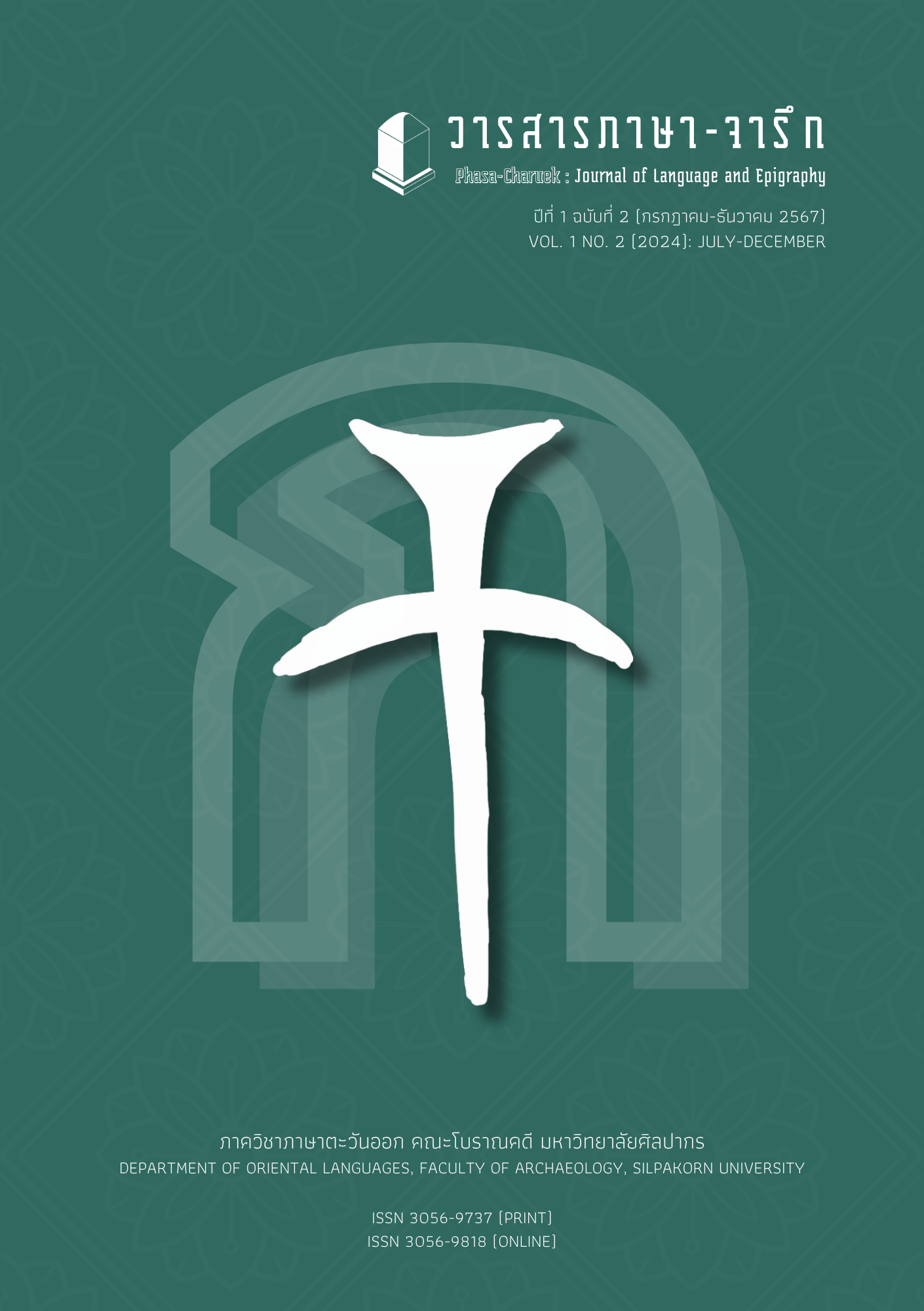Reflections on culture and traditions from the Jātakas in the Mahāvastu Avadāna
Main Article Content
Abstract
The Mahāvastu Avadāna is a Buddhist Sanskrit scripture. It describes itself as being the Buddhist monastic codes (Vinaya Piṭaka) of the Lokottaravādin of the Mahāsaṅghika school. The content mentions the history of the Buddha, emphasizing the miracles clearly, added with 54 Jātaka stories, both similar to those in Pali Commentary and different ones. The period of composing of the scripture is believed to have started in the 3rd century BE and was amended several times until the 9th century BE. From the researcher’s study, it was found that the scripture contains many Jātaka stories that visually describe the way of life of people in society. The article therefore aims to present reflections on various ritual traditions such as fire worship ceremonies, sacrifice ceremonies, naming ceremonies, wedding ceremonies, and celebrations of important festivals, including the culture of eating, drinking and adorning the body that appears in the Jātaka, which will make one appreciate the works of Avadāna literature as a source of information reflecting the life of ancient Indian society all around.
Article Details

This work is licensed under a Creative Commons Attribution-NonCommercial-NoDerivatives 4.0 International License.
References
ปัทมา นาควรรณ. (2556). “การศึกษาวิเคราะห์คัมภีร์ทิวยาวทานเรื่องที่ 1-19.” วิทยานิพนธ์ปริญญาศิลปศาสตรดุษฎีบัณฑิต บัณฑิตวิทยาลัย มหาวิทยาลัยศิลปากร.
พระอุดรคณาธิการ (ชวินทร์ สระคำ). (2538). ประวัติศาสตร์พระพุทธศาสนาในอินเดีย. กรุงเทพฯ: โรงพิมพ์มหาจุฬาลงกรณราชวิทยาลัย.
วิทยา ศักยาภินันท์. (2549). ศาสนาฮินดู. กรุงเทพฯ: สำนักพิมพ์มหาวิทยาลัยเกษตรศาสตร์.
สมเด็จพระมหาสมณเจ้า กรมพระยาวชิรญาณวโรรส. (2541). พุทธประวัติ เล่ม 1. พิมพ์ครั้งที่ 53. กรุงเทพฯ: โรงพิมพ์มหามกุฏราชวิทยาลัย.
สำเนียง เลื่อมใส, ผู้แปล. (2553). มหาวัสตุอวทาน เล่ม 1. กรุงเทพฯ: มูลนิธิสันสกฤตศึกษาในพระราชูปถัมภ์สมเด็จพระเทพรัตนราชสุดาฯ สยามบรมราชกุมารี.
สำเนียง เลื่อมใส, ผู้แปล. (2557). มหาวัสตุอวทาน เล่ม 2. กรุงเทพฯ: มูลนิธิสันสกฤตศึกษาในพระราชูปถัมภ์สมเด็จพระเทพรัตนราชสุดาฯ สยามบรมราชกุมารี.
สำเนียง เลื่อมใส, ผู้แปล. (2561). มหาวัสตุอวทาน เล่ม 3. กรุงเทพฯ: มูลนิธิสันสกฤตศึกษาในพระราชูปถัมภ์สมเด็จพระเทพรัตนราชสุดาฯ สยามบรมราชกุมารี.
สุจิตรา รณรื่น. (2538). ศาสนาเปรียบเทียบ. พิมพ์ครั้งที่ 4. กรุงเทพฯ: สำนักพิมพ์ดวงแก้ว.
สุนทร ณ รังษี. (2521). ปรัชญาอินเดีย ประวัติและลัทธิ. กรุงเทพฯ: บริษัท บพิธการพิมพ์ จำกัด.
Bagchi, Sitansusekhar. (1970). Mahāvastu Avadāna, Vol.1. Darbhanga: Mithila Institute of Post-Graduate Studies and Research in Sanskrit Learning.
Marciniak, Katarzyna. (2019). The Mahāvastu A New Edition, Vol.lll. Tokyo: The International Research Institute for Aadvanced Buddhology, Soka University.
Pandey, Rajbali. (1978). Hindu Saṃskāra. Delhi: Motilal Banarsidass.
Winternitz, Maurice. (1993). A History of Indian Literature, Vol.II. Delhi: Motilal Banarsidass.


